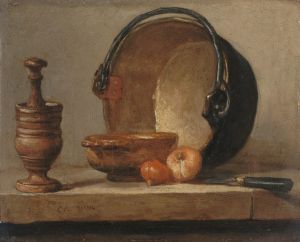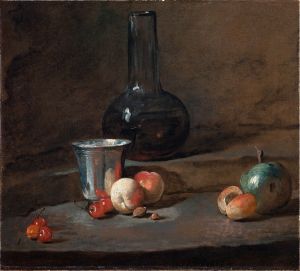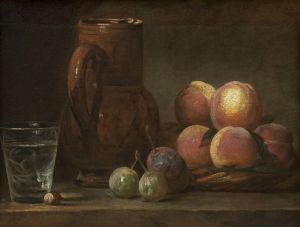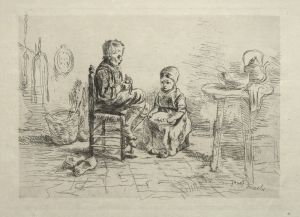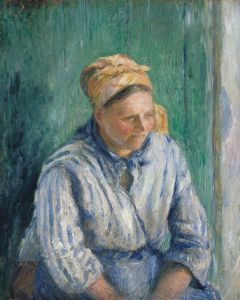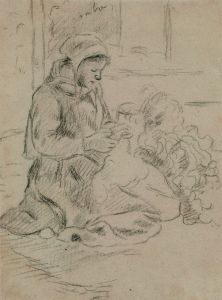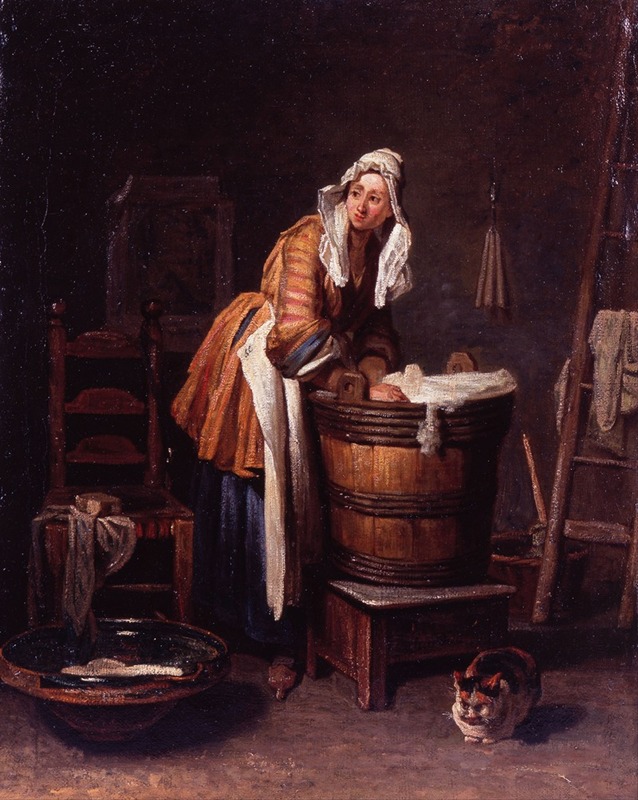
Washerwoman
A hand-painted replica of Jean Siméon Chardin’s masterpiece Washerwoman, meticulously crafted by professional artists to capture the true essence of the original. Each piece is created with museum-quality canvas and rare mineral pigments, carefully painted by experienced artists with delicate brushstrokes and rich, layered colors to perfectly recreate the texture of the original artwork. Unlike machine-printed reproductions, this hand-painted version brings the painting to life, infused with the artist’s emotions and skill in every stroke. Whether for personal collection or home decoration, it instantly elevates the artistic atmosphere of any space.
Jean Siméon Chardin's Washerwoman is a notable example of the French artist's mastery in genre painting, a style that focuses on scenes of everyday life. Painted in the mid-18th century, this work reflects Chardin's characteristic attention to detail, his subtle use of color, and his ability to capture the quiet dignity of ordinary people engaged in domestic tasks.
The painting depicts a washerwoman, a common figure in 18th-century French society, as she works diligently in a modest interior setting. Chardin's composition emphasizes simplicity and realism, avoiding any sense of grandeur or idealization. The washerwoman is shown absorbed in her task, her posture and expression conveying a sense of focus and humility. The muted color palette, dominated by earthy tones, enhances the intimate and serene atmosphere of the scene.
Chardin was known for his ability to elevate everyday subjects into works of art that resonate with timeless humanity. His paintings often celebrated the virtues of hard work, domestic life, and quiet contemplation, aligning with the values of the Enlightenment period. Washerwoman exemplifies these themes, offering a glimpse into the lives of working-class individuals during Chardin's time.
The exact date of the painting's creation is not definitively documented, but it is generally attributed to the 1730s or 1740s, a period when Chardin was producing many of his most famous genre scenes. The work is executed in oil on canvas, a medium Chardin frequently used to achieve the soft textures and delicate lighting effects that characterize his style.
Chardin's approach to painting was highly regarded by his contemporaries, and he was celebrated for his ability to capture the beauty of ordinary life. His works, including Washerwoman, were praised for their honesty and lack of pretension, standing in contrast to the more elaborate and theatrical styles of Rococo art that were popular during the same period.
Today, Washerwoman is considered an important example of Chardin's contribution to the genre painting tradition. The painting is held in the collection of the Nationalmuseum in Stockholm, Sweden, where it continues to be appreciated for its artistic and historical significance.






